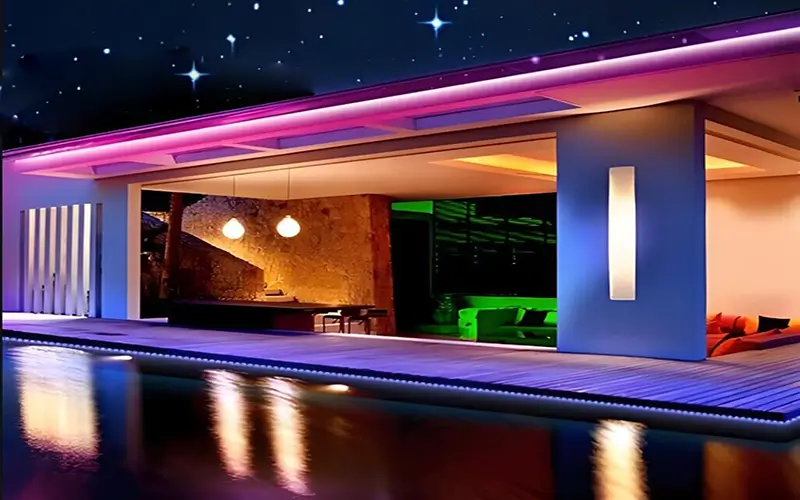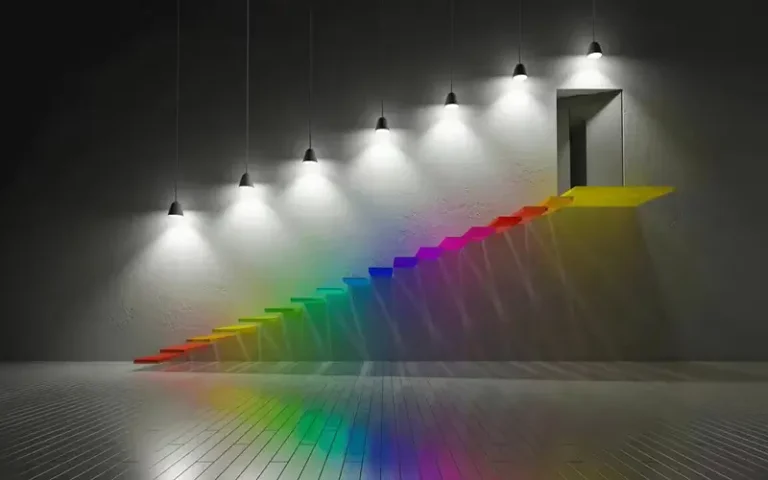RGB vs. RGBIC vs. RGBW vs. RGBWW vs. RGBCCT
When it comes to lights, especially LED strips, there are various options on the market: RGB, RGBIC, RGBW/RGBWW, and RGBCCT, among other terms. Some users are very questionable, so in order to better choose them, it is important to understand the differences between them. This is the key to choosing the right type of lighting for your needs. This article will walk you through RGB vs. RGBIC vs. RGBW vs. RGBWW vs. RGBCCT, explaining their features, how they compare to each other, and which might be the best choice for your next lighting project.
What is RGB?
RGB stands for Red, Green, and Blue. As we all know, these are the three primary colors of light. By combining them at different intensities, RGB LED lights can produce a wide spectrum of colors.
RGB lights are popular in applications that require dynamic and vivid color effects, such as gaming settings, mood lighting, and decorative installations. More about RGB lighting, pls read What are RGB LED Strip Lights?
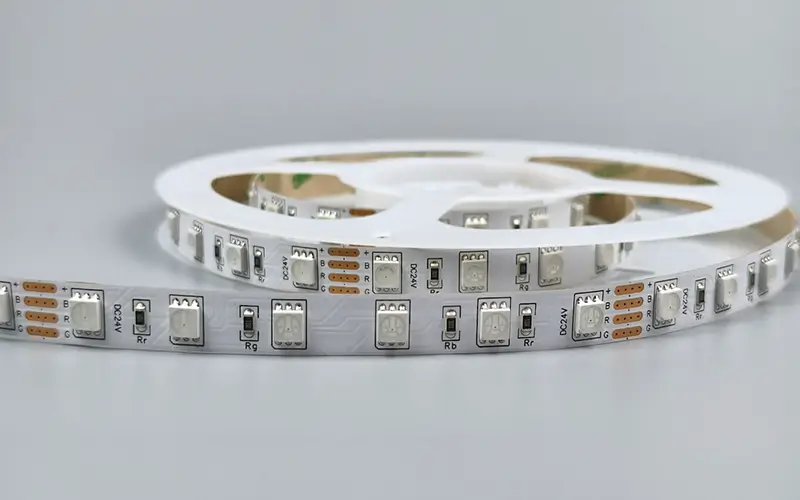
What is RGB Lighting Mainly Used For?
RGB lighting has a wide range of uses and is often used in residential and commercial settings. It is ideal for creating ambiance in living rooms, bedrooms, and entertainment spaces. RGB lights are also widely used in event lighting, stage design, and even architectural projects to highlight features through color-changing effects.
What is RGBIC?
RGBIC stands for independently controlled red, green, and blue, with one IC that can be programmed to control them. It is different from a standard RGB LED, where all LEDs on a strip display the same color at any given time.
RGBIC LED strips allows each section of the strip to be controlled individually. This means that different sections of the strip can display different colors at the same time. With their own programming, more complex and vivid lighting effects can be achieved.
Where is RGBIC Lighting Used?
RGBIC lighting is ideal for scenes that require dynamic and multi-color lighting effects. This makes it popular in events, home theaters, and creative installations, as a strip can display multiple colors and patterns at the same time.
What is RGBW/RGBWW?
RGBW/RGBWW adds white LEDs to a traditional RGB setup, including LED strips that contain warm or cool white LEDs as well as RGB LEDs. This means that in addition to the standard red, green, and blue LEDs, there is a dedicated white LED. More information about RGBWW lighting, pls check What is RGBWW?
This allows the lighting to not only produce color and pure white light but also warm or cool white light as needed.
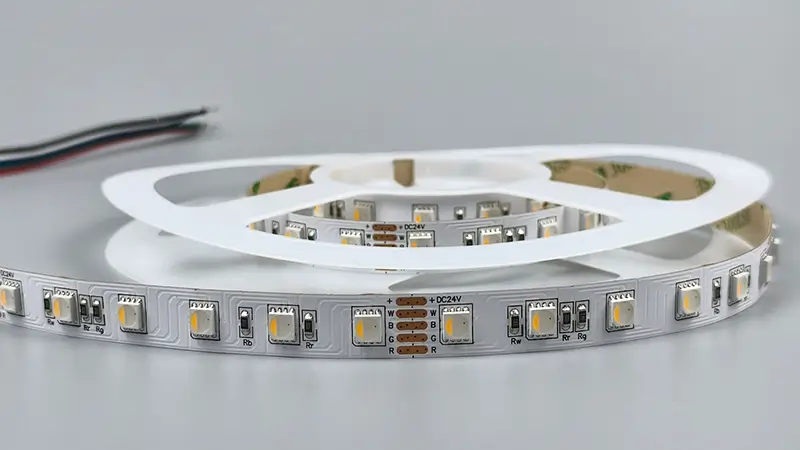
Where is RGBW/RGBWW Lighting Used?
RGBWW and RGBCW lights are typically used in environments that require both ambient color lighting and functional white lighting. This may include living rooms, dining rooms, bedrooms, and commercial spaces that require both mood lighting and functional lighting.
Also ideal for living spaces, kitchens, bathrooms, and outdoor lighting where you may sometimes want vibrant colors but also need bright, clear light to get the job done.
What is RGBCCT?
RGBCCT stands for Red, Green, and Blue, plus one warm white and one cool white correlated color temperature. This type of LED light strip includes all the features of RGB, RGBW, and RGBWW/RGBCW, but with the added ability to adjust the color temperature of warm white light.
Therefore, RGBCCT lights can precisely control the color and temperature of light, from warm white to cool white.
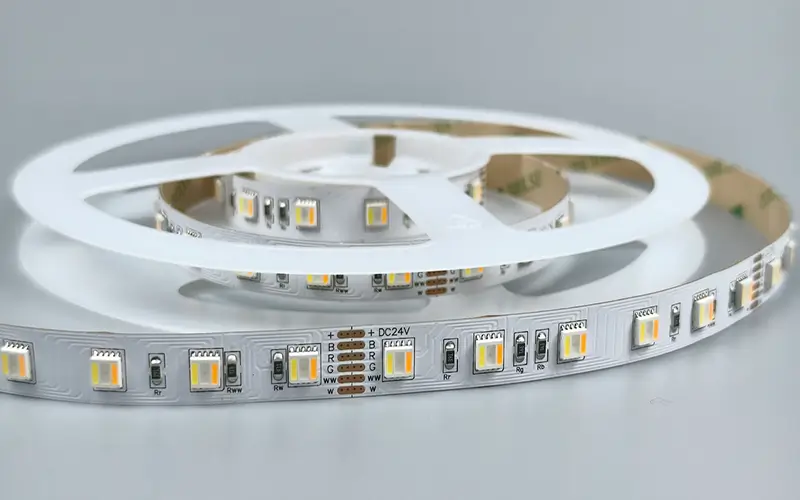
Where is RGBCCT Lighting Used?
RGBCCT lighting is the most versatile option, but the cost is a bit high. However, it is well suited for any environment where lighting needs to change throughout the day. At the same time, it is also more suitable for smart homes, offices, retail spaces, and hospitality environments, where the ability to adjust color and temperature can enhance the atmosphere and function of the space.
RGB vs. RGBIC vs. RGBW vs. RGBWW vs. RGBCCT
| Feature | RGB | RGBIC | RGBW/RGBCW | RGBCCT |
| Colors | Red, Green, Blue | Red, Green, Blue with IC control | Red, Green, Blue, White/warm white | RGB + Warm & Cool White + CCT |
| White Light | No | No | Yes | Yes |
| Cost | Cheap | Expensive | A bit expensive | Expensive |
| Multi-color display | No | Yes | No | Yes |
| Control | Simple | Complicated | Simple | Complicated |
| Application | Normal color effects | Dynamic multi-color | Color effect + functionality | Color effect + Full color |
RGB vs. RGBIC
When comparing RGB and RGBIC, the main differences are control, cost, and flexibility. RGB is suitable for simpler lighting setups where a single color is displayed on the entire strip at a time. Moreover, it is simple to use and is great for creating a general atmosphere.
RGBIC, on the other hand, offers more advanced features, allowing different sections of the strip to display different colors at the same time. This makes RGBIC ideal for more complex and vibrant lighting effects, especially in environments such as gaming setups, parties, or creative installations that require dynamic lighting.
RGB vs. RGBW/RGBWW
When choosing between RGB and RGBW/RGBCW, the decision largely comes down to the need for white light. If you simply need a colored lighting effect, RGB is the ideal choice. However, RGBW or RGBCW offer the added benefit of pure white light or warm/cool white light, making them better suited for spaces that require colorful ambiance and functional lighting.
RGBW is ideal for environments that require crisp white light, such as kitchens or work areas. RGBCW adds the option of switching between warm and cool white light, making it suitable for living spaces where lighting needs to change throughout the day.
RGBW vs. RGBCCT
The main difference between RGBW and RGBCCT is the degree of control over white or warm light. RGBW offers the basic pure white option. RGBCCT, on the other hand, can have both pure warm light and pure white light allowing for full control over the color temperature of the white light, from warm to cool.
This makes RGBCCT the most versatile option, ideal for environments where both color and temperature adjustments are important. For example, in a smart home or professional environment where lighting needs to adapt to different tasks or times of day, RGBCCT offers the most flexibility.
How to Choose Between RGB, RGBW, and RGBCCT?
Choosing between RGB, RGBW, and RGBCCT depends on your specific lighting needs, cost, and whether dimming is required:
- RGB is best for basic color lighting effects.
- RGBW is ideal for spaces that require both vivid colors and pure white/warm white lighting.
- RGBCCT is the best choice if you need full control over the color and temperature of the white light, providing the most flexibility for different settings and atmospheres.
Summary
Understanding the differences between RGB vs. RGBIC vs. RGBW vs. RGBWW vs. RGBCCT. Each type of LED strip offers unique features and capabilities. Whether you need simple ambient lighting or a complex multi-color display, there is an option to suit your needs. At ESSENLED, you can find a wide variety of LED strips in colorful.
FAQs
RGB (red, green, blue) can create a wide range of colors by mixing these three primary colors. RGBW, on the other hand, adds a white or warm LED to the mix, which produces pure white light and more subtle color combinations.
Depending on your needs and use, RGBIC is generally better for more dynamic and complex lighting effects because it allows sections of the LED strip to display different colors at the same time. RGB is simpler to operate, and the entire strip displays the same color at any given time.
RGBWW stands for Red, Green, Blue, Warm White. It adds a warm white LED to the RGB configuration, providing a softer light. RGBW, on the other hand, adds a white LED to the RGB configuration, which provides a cleaner, brighter white light.
Yes, RGBIC is generally more expensive than RGB. Because it uses additional technology that allows individual segment control and more complex lighting effects, it is generally more expensive.

